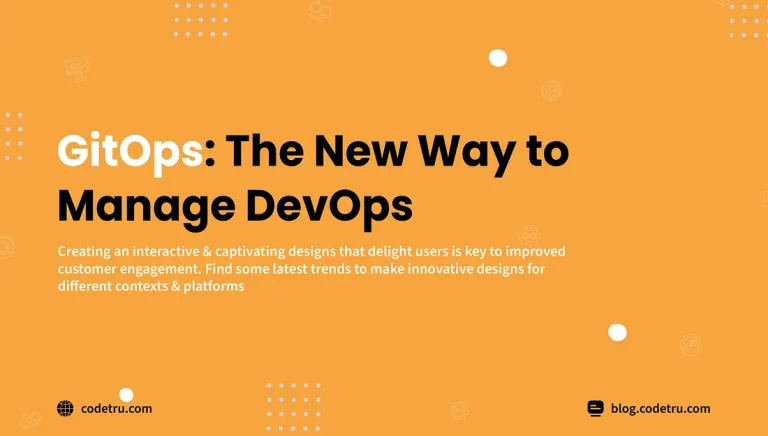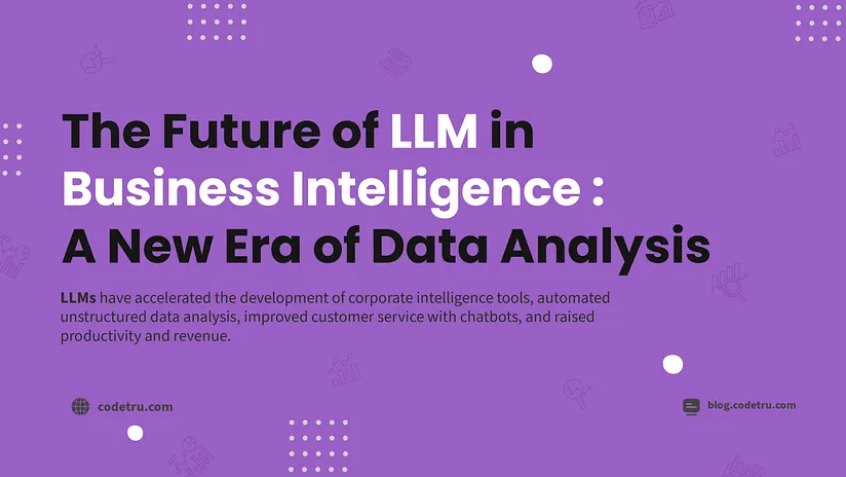GitOps is more than just a buzzword. It is a powerful and practical way to manage your infrastructure and applications using Git as a single source of truth.
What is GitOps?
GitOps is an operational framework that uses Git as a source control system for infrastructure automation. It is an evolution of Infrastructure as Code (IaC), which is a DevOps best practice that treats infrastructure configuration as code and stores it in a version-controlled repository.
GitOps leverages Git pull requests to verify and automatically deploy system architecture changes. This means that any change to the infrastructure or application code must be proposed as a pull request, reviewed by peers, and approved before it is applied to the target environment. This ensures that the desired state of the system is always reflected in the Git repository, and that the actual state of the system is always in sync with the desired state.
Why GitOps?
GitOps offers many benefits for modern infrastructure and application development, such as:
Improved reliability
Reduces human errors and ensures consistency across environments by automating the deployment process and enforcing code reviews . It also enables faster recovery from failures by allowing you to roll back to a previous state or restore from a backup.
Faster Feedback
GitOps enables continuous delivery and integration by triggering deployments based on code changes and providing real-time feedback on the status and health of the system . It also allows you to monitor and measure the impact of your changes using metrics and observability tools.
Enhanced Security
Improves security by enforcing access control and auditability on the Git repository and the deployment pipeline. It also helps you comply with security policies and standards by using code scanning and testing tools.
Increased Collaboration
GitOps fosters collaboration and transparency by using Git as a common platform for communication and documentation. It also encourages code reuse and sharing by using modular and reusable components.
How GitOps Works?
GitOps consists of three core components: IaC, merge requests, and CI/CD.
IaC
Infrastructure as Code is the practice of defining and managing infrastructure configuration as code, using declarative languages such as YAML or JSON. IaC allows you to describe the desired state of the system in a human-readable and machine-executable format, and store it in a Git repository.
Merge Requests
Merge requests are the mechanism for proposing, reviewing, and approving changes to the infrastructure or application code. Merge requests allow you to collaborate with your team, enforce quality standards, and track the history of changes.
CI/CD
Continuous Integration and Continuous Delivery are the processes for building, testing, and deploying the infrastructure or application code. CI/CD allows you to automate the deployment process, verify the correctness and performance of the system, and deliver value to the end-users faster and more frequently.
How GitOps Differs from Traditional Approaches?
GitOps is a modern and innovative approach to infrastructure management that differs from traditional approaches in several ways, such as:
Manual Provisioning
Manual provisioning is the process of manually creating and configuring infrastructure resources using graphical user interfaces (GUIs) or command-line interfaces (CLIs). It is prone to human errors, inconsistency, and inefficiency, and does not provide any version control or auditability.
Imperative Scripts
Imperative scripts are the scripts that perform specific actions on the infrastructure, such as creating, updating, or deleting resources. Imperative scripts are difficult to maintain, test, and reuse, and do not guarantee the desired state of the system.
Configuration Management Tools
Configuration management tools are the process of using tools such as Ansible, Chef, or Puppet to automate the installation and configuration of software on the infrastructure. Configuration management tools are complex, stateful, and agent-based, and do not integrate well with cloud-native platforms and environments.
What are the Challenges and Limitations of GitOps?
GitOps is not a silver bullet that solves all the problems of infrastructure management. It also has some challenges and limitations that need to be considered, such as:
Dependency Management
GitOps requires managing the dependencies between the infrastructure and application components, such as the order, timing, and frequency of deployments. Dependency management can be challenging, especially when dealing with multiple teams, environments, and services.
Error Handling
It requires handling the errors and failures that may occur during the deployment process. Error handling can be complicated, especially when dealing with distributed and dynamic systems.
Compliance Requirements
GitOps requires complying with the regulatory and organizational requirements that may apply to the infrastructure and application domains, such as security, privacy, or governance. Compliance requirements can be demanding, especially when dealing with sensitive or critical data and systems.
What are the Tools and Practices for GitOps?
GitOps is supported by a variety of tools and practices that can help you implement and improve it, such as:
GitLab
GitLab is a web-based platform that provides a complete solution for GitOps, including Git hosting, code review, CI/CD, Kubernetes integration, and more . GitLab allows you to manage your entire GitOps workflow from a single interface, and offers many features and benefits, such as:
GitLab Flow
GitLab Flow is a set of branching and merging strategies that help you organize and optimize your GitOps workflow. GitLab Flow supports different scenarios and use cases, such as feature branches, environment branches, or release branches.
GitLab CI/CD
GitLab CI/CD is a built-in service that automates the building, testing, and deploying of your infrastructure and application code. GitLab CI/CD supports various languages, frameworks, and platforms, and integrates with many tools and services, such as Docker, Helm, or AWS.
GitLab Kubernetes
GitLab Kubernetes is a feature that allows you to connect, manage, and deploy to your Kubernetes clusters from GitLab. GitLab Kubernetes simplifies the configuration and operation of your Kubernetes clusters and provides visibility and feedback on the status and health of your deployments.
Codefresh
Codefresh is a cloud-native platform that provides a specialized solution for GitOps, focusing on Kubernetes and Docker . Codefresh allows you to build, test, and deploy your Kubernetes applications faster and easier, and offers many features and benefits, such as:
- Codefresh Pipelines: Codefresh Pipelines are the core component that automates the execution of your GitOps workflow. Codefresh Pipelines are based on YAML and Docker and support various steps and actions, such as cloning, building, testing, or deploying.
- Codefresh GitOps Dashboard: Codefresh GitOps Dashboard is a feature that allows you to monitor and control your GitOps deployments from Codefresh only. It provides a graphical representation of your workflow, and enables you to view, compare, and sync the state of your Git repository and your Kubernetes cluster.
- Codefresh Marketplace: Codefresh Marketplace is a feature that allows you to discover and use pre-built pipelines and steps for your GitOps workflow. It offers a variety of integrations and plugins for different tools and services, such as Argo CD, Flux, or Terraform.
Argo CD
Argo CD is an open-source tool that provides a declarative and continuous delivery solution for Kubernetes allowing you to sync your Kubernetes manifests from your Git repository to your Kubernetes cluster, and offers many features ad benefits.
- Argo CD UI: Argo CD UI is a web-based interface that allows you to visualize and manage your GitOps deployments. It displays the topology and status of your applications, and enables you to sync, rollback, or override the state of your resources
- Argo CD Sync: Argo CD Sync is a feature that allows you to automatically or manually sync your Git repository and your Kubernetes cluster. It also ensures that your cluster state matches your repository state, and handles any conflicts or errors that may arise.
- Argo CD Rollouts: Argo CD Rollouts is a feature that allows you to perform advanced deployment strategies for your GitOps deployments, such as blue-green, canary, or progressive delivery. Argo CD Rollouts helps you optimize the performance and reliability of your applications, and reduce the risk of failures.
Terraform
Terraform is an open-source tool that provides a declarative and cross-platform solution for IaC. It enables you to define and manage infrastructure resources for various providers, such as AWS, Azure, or GCP, using a domain-specific language (DSL) called HCL. Terraform offers many features and benefits, such as:
- Terraform CLI: Terraform CLI is a command-line tool that allows you to interact with your Terraform code and infrastructure.
- Terraform Cloud: Provides features such as remote state storage, version control integration, team access management, or policy enforcement.
- Terraform Modules: Terraform Modules are reusable and configurable units of Terraform code that encapsulate common or complex infrastructure components.
These are some of the tools that support GitOps, but there are many more that you can explore and use. You can also combine and integrate these tools to create your own GitOps solution that suits your needs and preferences.
How to Adopt GitOps?
GitOps is not a one-size-fits-all approach, but rather a flexible and adaptable one. You can adopt GitOps gradually and incrementally, starting from simple and small projects, and scaling up to complex and large ones. You can also adopt GitOps partially or fully, depending on your goals and constraints.
Here are some best practices or tips for adopting GitOps, based on the experience and advice of experts and practitioners:
- Use a dedicated GitOps repository: A GitOps repository contains only the infrastructure and application manifests, and nothing else. A GitOps repository helps you isolate and manage your GitOps code, and avoid mixing it with other code or files.
- Automate code deployments: Code deployments are the process of applying the changes in your GitOps repository to your target environment. Code deployments should be automated and triggered by code changes, and not by manual or external actions. This ensures that your deployments are consistent, reliable, and fast.
- Set up alerts and monitoring: Alerts and monitoring are the process of collecting and analyzing data and metrics on the performance and health of your GitOps deployments. Alerts and monitoring help you detect and resolve issues, optimize and improve your deployments, and measure and report your results.
Conclusion
GitOps is a powerful and practical way to manage your infrastructure and applications using Git as a single source of truth. GitOps offers many benefits, such as improved reliability, faster feedback, enhanced security, and increased collaboration. GitOps is supported by a variety of tools and practices that can help you implement and improve it. GitOps is a flexible and adaptable approach that you can adopt gradually and incrementally, depending on your needs and preferences
FAQs about GitOps
1. What is GitOps and how does it improve DevOps practices?
GitOps is an operational framework that uses Git as the single source of truth for managing infrastructure and applications. It enhances DevOps practices by automating deployments through Git pull requests, ensuring consistency, and reducing human errors. By leveraging Git for version control and infrastructure automation, GitOps improves reliability, security, and collaboration across development teams.
2. How can GitOps be integrated with existing CI/CD pipelines?
Integrating GitOps with existing CI/CD pipelines involves configuring your CI/CD tools to work seamlessly with Git repositories. You can automate deployments by triggering pipeline jobs from Git commits and merge requests. This integration ensures that code changes are continuously tested and deployed using GitOps principles, enhancing the efficiency and reliability of the deployment process.
3. What role does GitOps play in multi-cloud or hybrid cloud environments?
In multi-cloud or hybrid cloud environments, GitOps simplifies infrastructure management by providing a unified approach to configuration and deployment across different cloud platforms. Using Git as the source of truth, GitOps enables consistent management and visibility of infrastructure regardless of the underlying cloud providers, making it easier to maintain and orchestrate resources across diverse environments.
4. How does GitOps impact disaster recovery and business continuity?
GitOps enhances disaster recovery and business continuity by enabling quick restoration of infrastructure to a known good state. Since all configurations and changes are stored in Git repositories, you can easily roll back to previous versions or restore from backups in case of a failure. This capability ensures that your systems can recover quickly and minimize downtime during disruptions.
5. What best practices should be followed when adopting GitOps in an organization?
When adopting GitOps, consider the following best practices:
Establish Clear Repository Structure: Organize your Git repositories to separate infrastructure code from application code, facilitating easier management and updates.
Automate Deployments: Ensure that all deployments are automated and triggered by changes in the Git repository to maintain consistency and reduce manual errors.
Implement Robust Monitoring and Alerts: Set up comprehensive monitoring and alerting mechanisms to track the health and performance of your GitOps deployments and address issues proactively.
Regularly Review and Update Policies: Periodically review and update your GitOps policies and practices to adapt to evolving requirements and improve efficiency.
Following these practices helps in leveraging the full potential of GitOps while maintaining a reliable and effective deployment pipeline.







